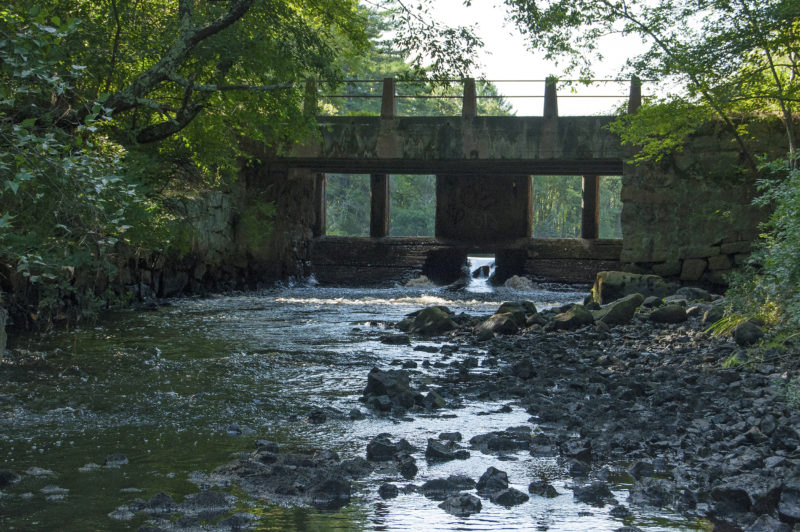Removal of dam at Horseshoe Mill will help Weweantic River’s native fish thrive again
Two years from now, the Weweantic River’s rich populations of migratory fish will once again be able to swim freely to their freshwater spawning areas when the crumbling remnants of a dam are removed from the Coalition’s Horseshoe Mill property in Wareham.

The crumbling remnants of a dam at Horseshoe Mill in Wareham block fish from swimming up the Weweantic River to their freshwater spawning grounds.
Those fish now have a hard time reaching their spawning areas due to the dam, which sits at the Weweantic River’s head of tide: the place where salt water from Buzzards Bay meets fresh water flowing downstream from its headwaters in Carver and Middleborough.
The dam is a remnant of iron works that were once located here on Buzzards Bay’s largest freshwater tributary in the 1800s. Although these abandoned factory buildings burned down in the mid-1900s, the dam was left behind. Unmaintained, it has sat across the river for decades, blocking access for fish and shrinking the habitat they use for spawning.
Despite this blockage, the Weweantic is still home to the most diverse community of migratory fish that remains anywhere on Buzzards Bay – river herring, American eels, white perch, rainbow smelt, and more. “There really is an opportunity here that’s been lost elsewhere,” said Brendan Annett, the Coalition’s Vice President of Watershed Protection.
But river restoration isn’t just for fish. Removing the dam at Horseshoe Mill will improve the river for people, too. This restoration project is similar to the work we did at The Sawmill in Acushnet, another former industrial site where a dam once blocked fish from swimming upstream. After the dam was lowered and a nature-like fishway was constructed in 2008, river herring populations in the Acushnet River increased dramatically. We then added paths, river overlooks, a canoe launch, and interpretive signage to create a public park where people can walk, paddle, fish, learn, and appreciate their local river.
The process to restore the river at Horseshoe Mill began two years ago, when the Coalition analyzed several options for dam removal and restoration. After looking at multiple alternatives, we decided the best option for fish, wildlife, and public access was to remove the dam.
This month, we selected the ecological engineering firm Princeton Hydro to design the process for removing the dam and restoring the river. Restoration work at Horseshoe Mill is expected to begin in winter 2018-19.